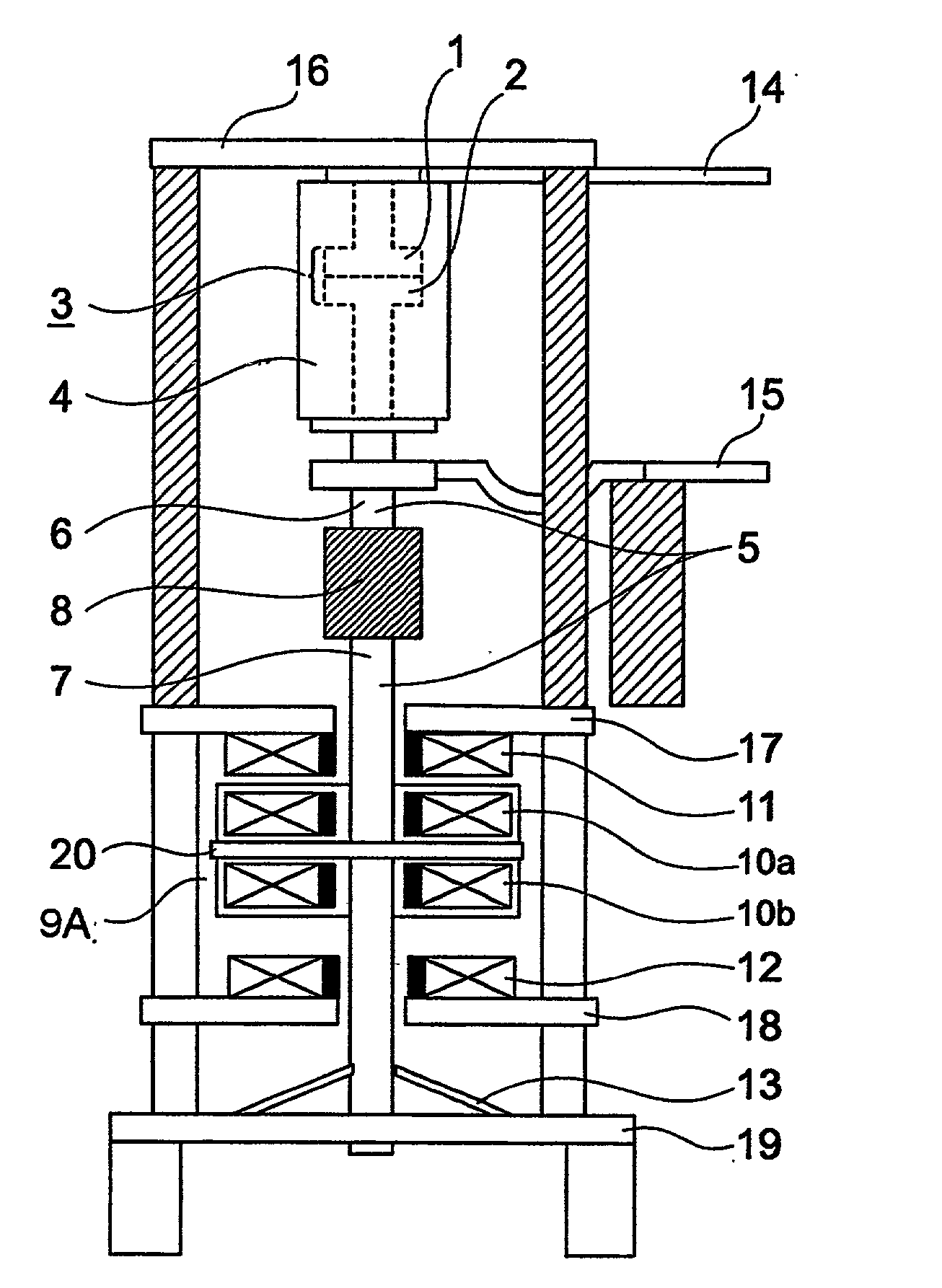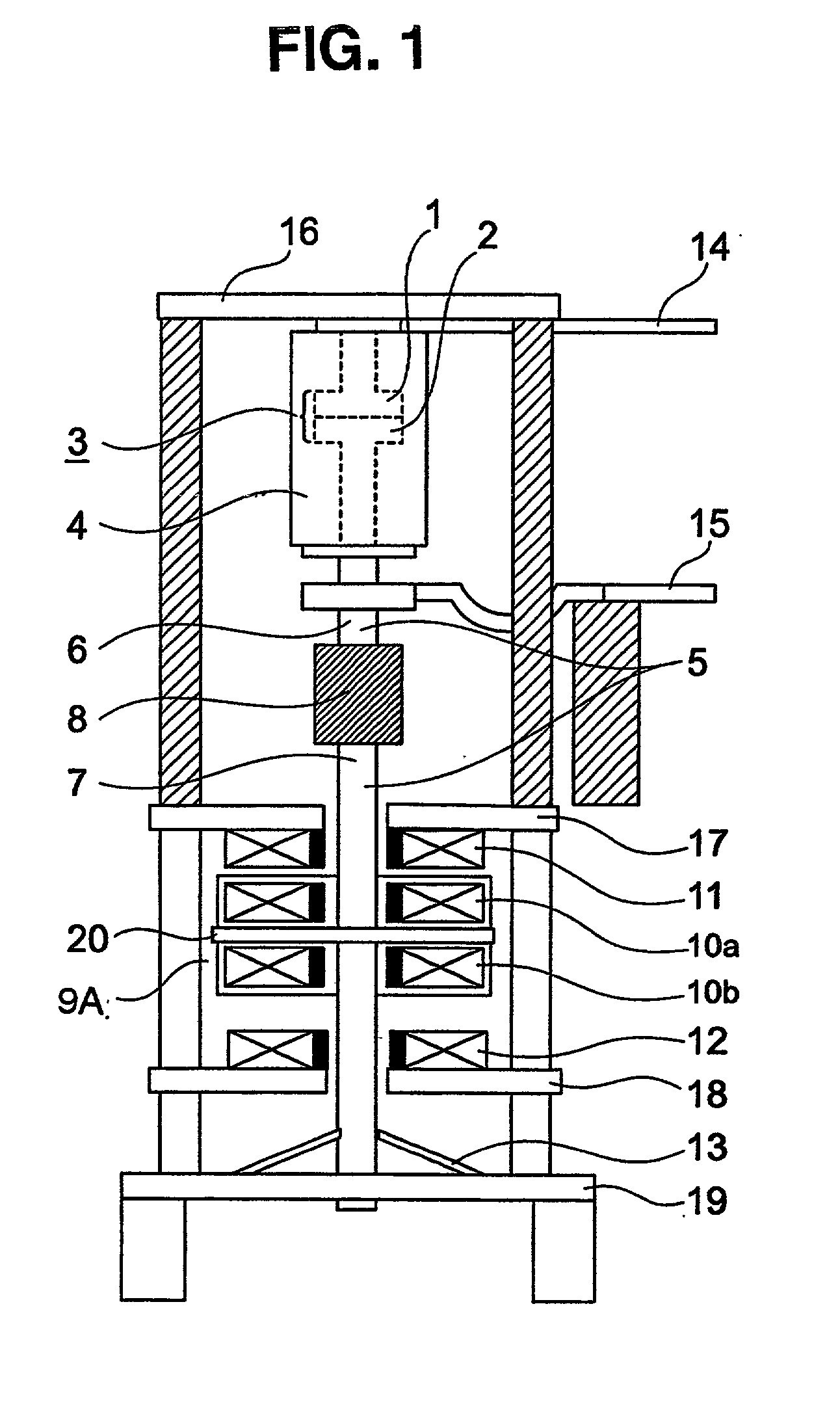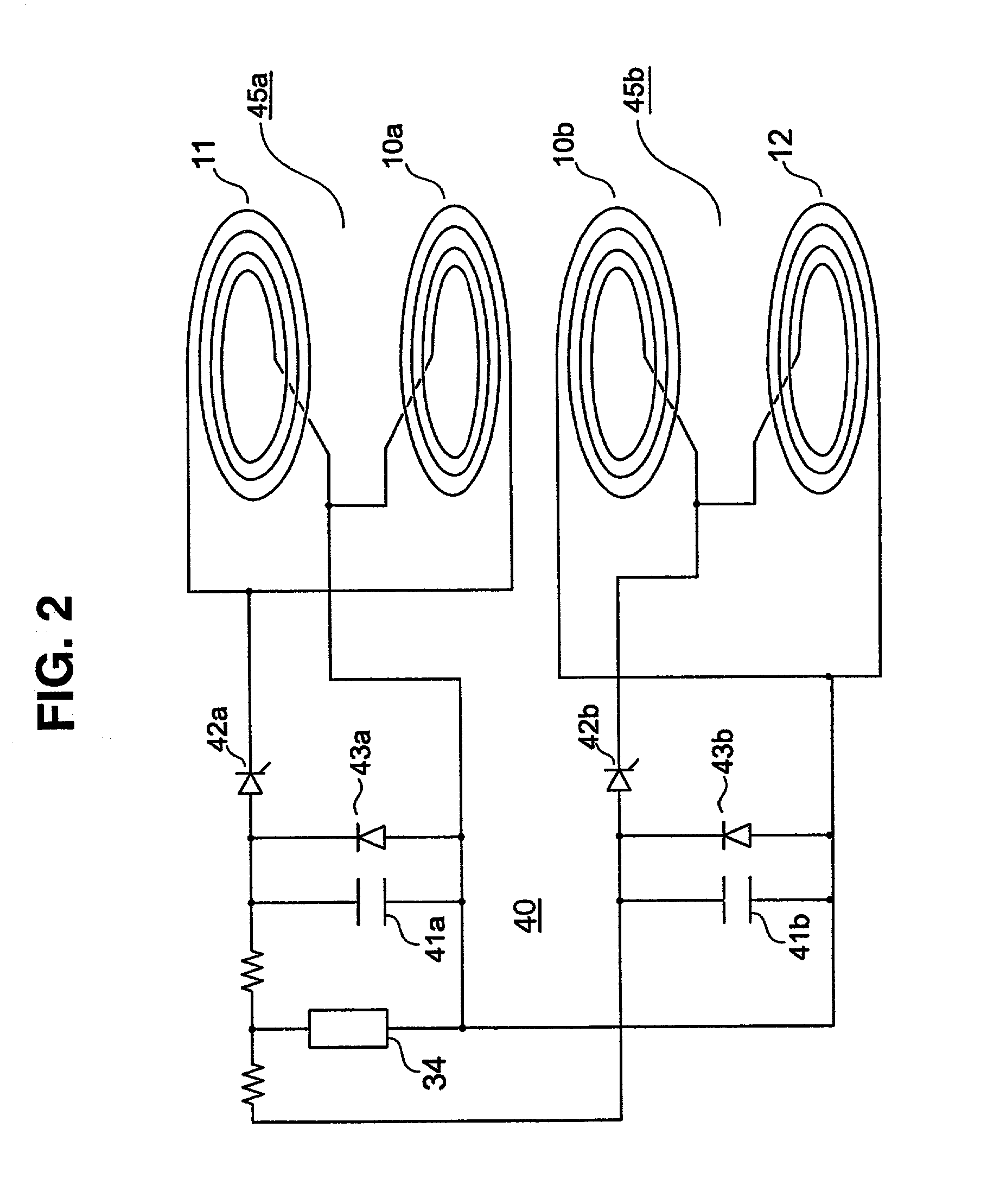Switching apparatus
a technology of switching apparatus and switch body, which is applied in the direction of switch power arrangement, air-break switch, high-tension/heavy-dress switch, etc., can solve the problems of limiting affecting the speed of operation, and affecting the ability of the switch to cope with the demands of increasing speed and control modifications
- Summary
- Abstract
- Description
- Claims
- Application Information
AI Technical Summary
Problems solved by technology
Method used
Image
Examples
first embodiment
[0050] FIG. 1 is a schematic elevation of a switching apparatus according to the present invention. Like the apparatus shown in FIGS. 24A and 24B, this embodiment includes a switch portion 3 having a fixed electrode 1 and a movable electrode 2 housed inside an evacuated chamber 4. The fixed electrode 1 is secured to a support plate 16 which forms an outer plate of the switching apparatus. The movable electrode 2 opposes the fixed electrode 1 and can reciprocate with respect to the fixed electrode 1 between an open and a closed position. The fixed electrode 1 and the movable electrode 2 are respectively connected to a first terminal 14 and a second terminal 15 by which the switch portion 3 can be connected to an electric circuit. A movable shaft 5 having a live portion 6 and a non-live portion 7 connected to each other by an insulating rod 8 is connected to the movable electrode 2 and an operating mechanism 9A for opening and closing the switch portion 3. A support plate 20 perpendic...
third embodiment
[0062] FIG. 7 is a schematic elevation of an operating mechanism 9C of a switching apparatus according to the present invention. In FIG. 7, contact opening fixed coil 11 and contact closing fixed coil 12 are disposed back to back and secured to opposite sides of support plate 20. The fixed coils 11 and 12 and the support plate 20 are secured to an outer frame 51 of the switching apparatus. The fixed coils 11 and 12 are disposed between the movable coils 10a and 10b, with contact opening fixed coil 11 opposing contact opening movable coil 10a and with contact closing fixed coil 12 opposing contact closing movable coil 10b. The movable coils 10a and 10b are both secured to the movable shaft 5 so as to move together with the movable shaft 5 as it translates in its axial direction. The structure of the switching apparatus is otherwise the same as that of the embodiment of FIG. 1. The operating mechanism 9C is controlled by a control circuit having a structure like that of the control ci...
fourth embodiment
[0065] FIGS. 8A and 8B are schematic elevations of an operating mechanism 9D of a switching apparatus according to the present invention showing the direction of current flowing in each coil of the operating mechanism 9D during contact opening operation and contact closing operation, respectively. FIG. 9 is a circuit diagram of a control circuit 60 for the operating mechanism 9D. The operating mechanism 9D has the same structure as the operating mechanism 9A of FIG. 1, but the control circuit 60 for the operating mechanism 9D is constructed such that the direction of current flowing through certain coils can be reversed. As a result, opposing coils can be made to exert either a repulsive force or an attractive force on each other.
[0066] As shown in FIG. 9, changeover switches 61 and 62 are installed just before each fixed coil 11 and 12 for reversing the direction of current flow in the contact opening fixed coil 11 and the contact closing fixed coil 12 of FIGS. 8A and 8B. FIGS. 10A...
PUM
 Login to View More
Login to View More Abstract
Description
Claims
Application Information
 Login to View More
Login to View More - R&D
- Intellectual Property
- Life Sciences
- Materials
- Tech Scout
- Unparalleled Data Quality
- Higher Quality Content
- 60% Fewer Hallucinations
Browse by: Latest US Patents, China's latest patents, Technical Efficacy Thesaurus, Application Domain, Technology Topic, Popular Technical Reports.
© 2025 PatSnap. All rights reserved.Legal|Privacy policy|Modern Slavery Act Transparency Statement|Sitemap|About US| Contact US: help@patsnap.com



